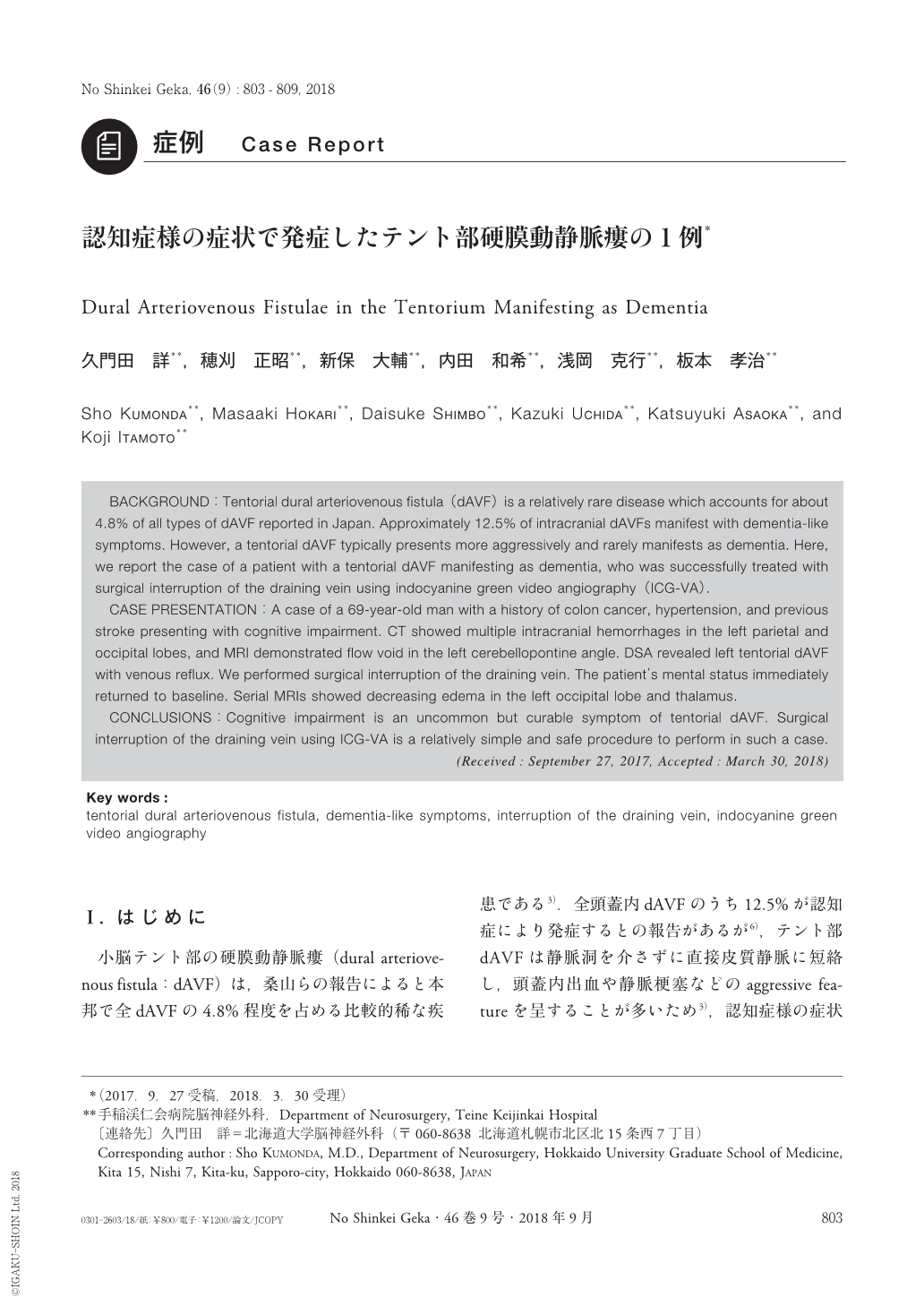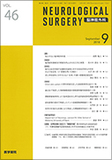Japanese
English
- 有料閲覧
- Abstract 文献概要
- 1ページ目 Look Inside
- 参考文献 Reference
Ⅰ.はじめに
小脳テント部の硬膜動静脈瘻(dural arteriovenous fistula:dAVF)は,桑山らの報告によると本邦で全dAVFの4.8%程度を占める比較的稀な疾患である3).全頭蓋内dAVFのうち12.5%が認知症により発症するとの報告があるが6),テント部dAVFは静脈洞を介さずに直接皮質静脈に短絡し,頭蓋内出血や静脈梗塞などのaggressive featureを呈することが多いため3),認知症様の症状で発症することは少ない.今回われわれは,テント上の多発性小出血と視床の浮腫による認知症様の症状で発症した小脳テント下面のdAVFを経験したので報告する.
BACKGROUND:Tentorial dural arteriovenous fistula(dAVF)is a relatively rare disease which accounts for about 4.8% of all types of dAVF reported in Japan. Approximately 12.5% of intracranial dAVFs manifest with dementia-like symptoms. However, a tentorial dAVF typically presents more aggressively and rarely manifests as dementia. Here, we report the case of a patient with a tentorial dAVF manifesting as dementia, who was successfully treated with surgical interruption of the draining vein using indocyanine green video angiography(ICG-VA).
CASE PRESENTATION:A case of a 69-year-old man with a history of colon cancer, hypertension, and previous stroke presenting with cognitive impairment. CT showed multiple intracranial hemorrhages in the left parietal and occipital lobes, and MRI demonstrated flow void in the left cerebellopontine angle. DSA revealed left tentorial dAVF with venous reflux. We performed surgical interruption of the draining vein. The patient's mental status immediately returned to baseline. Serial MRIs showed decreasing edema in the left occipital lobe and thalamus.
CONCLUSIONS:Cognitive impairment is an uncommon but curable symptom of tentorial dAVF. Surgical interruption of the draining vein using ICG-VA is a relatively simple and safe procedure to perform in such a case.

Copyright © 2018, Igaku-Shoin Ltd. All rights reserved.


